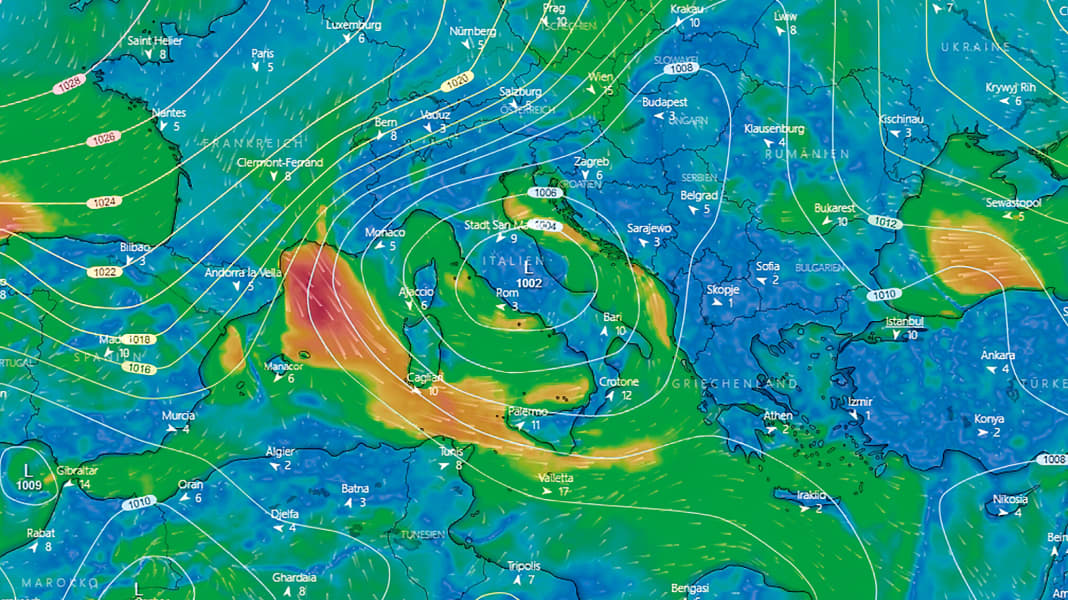Weather: A consequence of climate change? Severe storms over the Mediterranean

Torrential, prolonged rainfall has led to catastrophic flooding in Italy and Croatia in recent months, in some cases with fatalities and injuries. This was caused by low-pressure vortices lying as if nailed down over Italy, first over the heel of the boot and then over central Italy. Instead of moving eastwards, they filled up and then deepened again. Our colleagues from the YACHT editorial team were also caught up in a Cruise in the Ionian Sea The plan was to set off from Corfu to the Peloponnese and continue on to Athens. However, incessant strong southerly winds, sometimes with gusts of 50 knots and constant rain, blocked the route to Cape Maleas on the Peloponnese. For days, the clouds hung so low on the ridge of the island that it was reminiscent of a trip to the Hebrides. In between, there were two days of sunshine and calm, and then it started all over again. Numerous crews on the Croatian coast had a similar experience.
May is not a month for consistently moderate winds in the western Mediterranean. But during this period, such long periods of bad weather are rather rare. In the search for explanations, a first clue was found in a new edition of the Greece sailing guide by the Brit Rod Heikell. Regarding the weather in the area, he notes that, according to his observations and those of some locals, the weather is changing. The early season is becoming increasingly unstable, the late season more extreme with weather events such as Medicanes.
Departure bans imposed by harbour master due to severe weather
Our colleagues had a similar experience, having been caught up in medicanes in Greece twice in autumn since 2018, which were terrifying in terms of their strength and duration. In 2020, the authorities even closed all Aegean harbours for two days. The harbour masters imposed sailing bans. Later, the wind and rainfall were indeed of almost biblical proportions. Weather expert Dr Michael Sachweh puts the events in context:
We have been observing these very slow or practically non-existent lows for some time now. It seems to be a consequence of climate change. The jet stream at high altitude is very weak and the movement of the systems it pulls along has become much slower as a result."
In the past, such systems usually moved through in two to three days, but now they sometimes remain in one place for almost a week, filling up or deepening again. For boat people, the bad weather with lots of clouds and rain also means a long-lasting, stable wind situation. For people on land, the masses of water brought by the lows sometimes cause flooding and landslides, as in the Italian region of Emilia-Romagna. Up to 250 litres of rain per square metre in 24 hours were reported there for days. The only good news is that the rainfall has ended the long drought in northern Italy. For boaters, however, the conclusion is that the early season in the Mediterranean will be much less stable.
